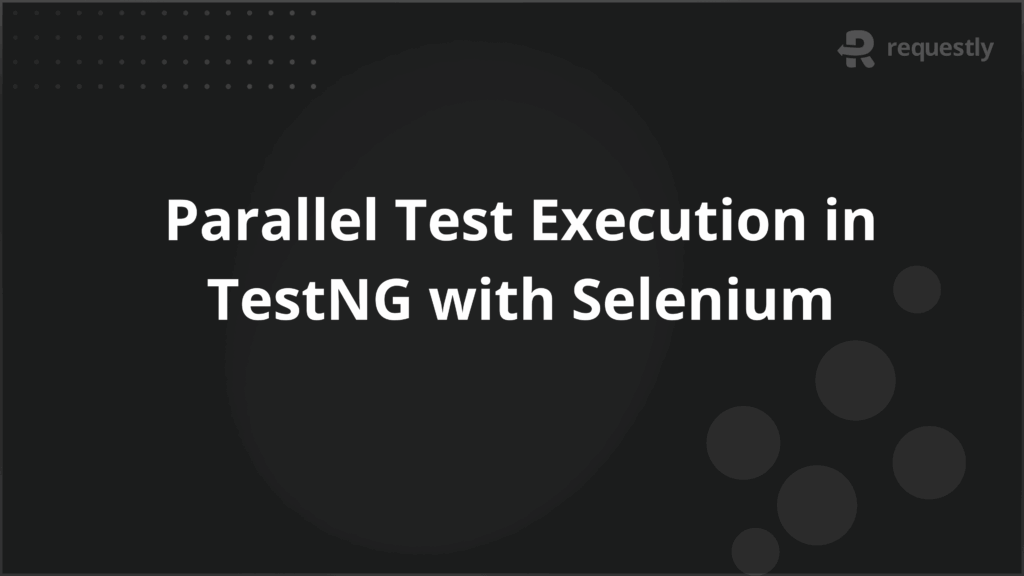When to Use GraphQL Over REST API?


GraphQL and REST serve the same goal of enabling client-server communication but differ in how they handle data delivery and structure. GraphQL is more effective when flexibility, speed, and precise data fetching are critical, while REST remains efficient for simpler, well-defined interactions.
Moreover, applications with multiple clients or evolving requirements benefit most from GraphQL, as it allows teams to iterate quickly without breaking existing functionality. Its flexibility in handling queries also simplifies data aggregation and reduces backend complexity for front-end developers.
This article explains when to use GraphQL over REST, including its benefits, use cases, limitations, and best practices.
Understanding GraphQL
GraphQL is a query language for APIs and a runtime for executing those queries on existing data. Unlike REST, which relies on multiple endpoints for different resources, GraphQL exposes a single endpoint that allows clients to request exactly the data they need. This approach eliminates over-fetching and under-fetching of data, which are common challenges in REST-based systems.
At its core, GraphQL revolves around three key components: queries, mutations, and subscriptions. Queries fetch data, mutations modify data, and subscriptions enable real-time updates. The schema defines the structure of data available and enforces type safety, ensuring predictable responses.
Key Benefits of Using GraphQL
GraphQL offers several advantages over traditional REST APIs, particularly in scenarios requiring efficient data fetching and flexible client-server communication. Understanding these benefits helps determine when it is the right choice for a project.
- Precise Data Fetching: Clients can request exactly the fields they need, reducing over-fetching and under-fetching. For example, a mobile app can retrieve only essential user details without loading unnecessary nested data.
- Single Endpoint Access: GraphQL uses one endpoint for all queries and mutations, simplifying API management and reducing the number of network requests compared to multiple REST endpoints.
- Strong Typing and Validation: The schema enforces data types and structure, ensuring consistent responses and reducing runtime errors during development.
- Real-Time Capabilities: Subscriptions allow applications to receive live updates when data changes, enabling features like notifications, live feeds, and dashboards.
- Improved Front-End Flexibility: Front-end teams can independently shape the data they need without backend changes, supporting multiple client types like web, mobile, and IoT applications.
- Reduced Network Overhead: By fetching only required data in a single request, GraphQL minimizes payload size and speeds up client-server communication, particularly for slow or limited network connections.
Use Cases for GraphQL
GraphQL is especially effective in scenarios where flexibility, efficiency, and real-time data access are critical. Its design makes it suitable for a variety of applications across industries.
- Applications with Complex Data Relationships: When data is deeply nested or highly interconnected, GraphQL allows clients to fetch related resources in a single request, avoiding multiple REST calls. For example, an e-commerce platform can retrieve product details, reviews, and inventory status simultaneously.
- Multiple Client Platforms: Systems that serve web, mobile, and IoT clients benefit from GraphQL’s ability to tailor responses for each client without changing the backend API.
- Real-Time Dashboards and Analytics: Subscriptions enable live updates for dashboards, stock tickers, or social feeds, delivering instant data changes to clients.
- Rapidly Evolving APIs: Applications that frequently change or expand can adopt GraphQL to prevent breaking existing clients, as new fields can be added without impacting existing queries.
- Aggregating Data from Multiple Sources: GraphQL can act as a unified layer to fetch data from various microservices or databases, simplifying client-side logic and reducing network overhead.
Limitations and Drawbacks of GraphQL
While GraphQL offers flexibility and efficiency, it also comes with challenges that teams must consider before adopting it over REST.
- Caching Complexity: Unlike REST, which often benefits from built-in HTTP caching per endpoint, caching in GraphQL is more complicated because requests vary depending on the query structure.
- Query Cost and Performance: Large or deeply nested queries can strain server resources, potentially impacting performance if not carefully monitored and optimized.
- Security Considerations: Flexible queries can expose servers to abuse, such as overly expensive queries or unintentional data leaks, requiring additional layers of authorization and query depth limits.
- Increased Server-Side Complexity: Implementing GraphQL requires designing schemas, resolvers, and handling error responses differently from REST, which can add development overhead.
- Learning Curve: Teams familiar with REST may need time to understand GraphQL concepts like schemas, queries, mutations, and subscriptions, as well as the associated tooling.
GraphQL vs REST: Key Differences
GraphQL and REST both serve as methods for client-server communication, but they handle data, performance, and flexibility differently. Understanding these differences helps teams determine which approach best fits their application needs.
Here is a table that highlights the key distinctions between GraphQL and REST:
| Feature | GraphQL | REST API |
| Data Fetching | Clients request exactly the fields they need in a single query, which avoids over-fetching and under-fetching. | Endpoints return fixed responses, which often requires multiple requests to gather related data. |
| Endpoints | Single endpoint handles all queries and mutations. | Multiple endpoints handle different resources. |
| Performance | Efficient for complex or nested data structures and reduces network calls. | Can result in over-fetching or multiple round trips for nested resources. |
| Versioning | Typically no versioning is needed because new fields can be added without breaking existing clients. | Versions are often required when changing API responses or structures. |
| Real-Time Data | Supports subscriptions that deliver live updates to clients. | Typically requires polling or WebSockets to provide real-time data. |
| Schema & Type Safety | Strongly typed schema defines available data and ensures consistency. | No inherent typing exists and relies on documentation or validation on the client or server. |
| Caching | Caching is more complex because queries can vary and often requires custom strategies. | Standard HTTP caching mechanisms like headers and proxies can be used easily. |
| Flexibility for Clients | Front-end teams can shape responses as needed without backend changes. | Clients receive predefined data and changes often require backend modifications. |
When to Use GraphQL vs REST
Deciding between GraphQL and REST depends on the specific needs of an application and how data is consumed by clients. Both have their strengths, and choosing the right approach ensures better performance, maintainability, and developer productivity.
Use GraphQL When:
- The application requires flexible and precise data fetching for multiple clients.
- Data structures are complex or nested, and multiple resources need to be fetched together.
- Real-time updates or subscriptions are important for the user experience.
- The API is expected to evolve frequently, and backward compatibility is needed.
- Front-end teams need the ability to request different data shapes without backend changes.
Use REST When:
- The API serves simple, well-defined resources with predictable responses.
- Standard HTTP caching is important to improve performance.
- The team prefers a straightforward implementation with minimal learning curve.
- Real-time updates or multiple client types are not a primary requirement.
- Versioning and backward compatibility can be managed easily through endpoints.
How to Migrate from REST to GraphQL
Migrating from REST to GraphQL requires careful planning to ensure a smooth transition without disrupting existing clients. Adopting a gradual, structured approach helps teams leverage GraphQL’s flexibility while maintaining stability.
- Identify Suitable Endpoints: Analyze current REST endpoints to determine which resources and queries would benefit most from GraphQL. Start with areas where over-fetching or multiple requests are common.
- Adopt a Hybrid Approach: Introduce GraphQL alongside existing REST APIs instead of replacing them entirely. This allows clients to gradually adopt GraphQL without breaking existing functionality.
- Design Efficient Schemas: Map REST resources to GraphQL types and define clear relationships. Ensure queries are optimized to prevent performance bottlenecks and overly complex requests.
- Implement Resolvers Strategically: Build resolvers that fetch data efficiently, reusing existing REST calls or database queries where possible to reduce server-side complexity.
- Monitor Performance: Track query execution times and server load to identify expensive queries. Apply depth limiting, query cost analysis, and caching to maintain performance.
- Test Thoroughly: Validate queries, mutations, and subscriptions to ensure they return the expected data. Test both GraphQL and REST endpoints to maintain consistency during migration.
Best Practices for Implementing GraphQL
Implementing GraphQL demands strategies that optimize performance, maintain security, and make APIs easy to use for multiple clients. Following best practices ensures GraphQL APIs are robust, scalable, and maintainable.
- Design Schemas for Client Needs: Define types and queries that reflect how clients consume data. For example, if a mobile app only needs summary data, provide lightweight query types instead of forcing clients to traverse large nested objects.
- Optimize Query Performance: Prevent expensive queries by setting query depth limits and analyzing query costs. For example, a deeply nested query that fetches user profiles, posts, and comments in a single request can overload the server. Implement dataloader or batching techniques to minimize redundant database calls.
- Enforce Field-Level Authorization: GraphQL exposes every field through the schema, so implement authorization at the field level. For instance, only allow admin users to access sensitive fields like user.email or transactionHistory. This protects sensitive data without requiring separate endpoints.
- Deprecate Fields Gradually: When modifying schemas, use the @deprecated directive instead of removing fields abruptly. This lets clients adapt over time without breaking functionality. Include clear messages for developers indicating alternative fields or queries.
- Implement Caching Intelligently: Since GraphQL queries vary, caching must often be done at the resolver or query level. For example, use response-level caching for frequently requested fields like product lists or top headlines, and combine with CDN caching for static data.
- Monitor and Log Queries in Production: Track slow queries, usage patterns, and error rates to identify bottlenecks. Tools like Apollo Engine or custom logging allow teams to detect queries that frequently fail or consume high resources, helping prioritize optimization.
- Handle Errors Clearly: Return structured error messages that specify which part of the query failed. For example, if a single nested field fails, allow the rest of the query to succeed and include path-specific errors in the response.
- Support Multiple Clients Efficiently: When serving web, mobile, or IoT clients, provide query fragments or reusable pieces of queries to ensure different clients can request data efficiently without modifying the backend schema repeatedly.
How Requestly Facilitates Testing with GraphQL
Requestly is a frontend development and debugging tool that allows developers to intercept, modify, and mock GraphQL API requests and responses directly in the browser.
Here are some key features of Requestly that help test GraphQL APIs effectively:
- Intercept and Modify GraphQL Requests in Real-Time: Utilize Requestly’s Modify Request Body rule to change query variables, operation names, or request headers on the fly without altering the backend.
- Mock GraphQL Responses: Create mock GraphQL responses using the Mock Server feature by defining custom response bodies and status codes to simulate various server behaviors.
- Redirect API Calls to Mock Servers: Set up Redirect Rules to reroute specific GraphQL API calls to your mock server, enabling isolated frontend testing.
- Modify GraphQL Responses Dynamically: Use the Modify Response Rule to adjust GraphQL responses in real-time, testing how your application handles different data structures or error scenarios.
- Simulate Network Conditions: Utilize Requestly to introduce delays or block specific requests, testing application behavior under various network scenarios.
- Share API Sessions: Use Requestly to capture and share API sessions with team members for collaborative debugging and consistent testing setups.
Conclusion
GraphQL provides a flexible alternative to REST APIs, letting clients request exactly the data they need while improving performance and reducing network calls. It works best for applications with complex data, multiple client types, or real-time updates, helping teams choose the right approach for their needs.
Requestly makes testing GraphQL APIs easier by letting developers intercept, modify, and mock requests and responses in the browser. Features like request modification, mock responses, API redirection, and network simulation help teams validate scenarios efficiently and ensure reliable API behavior.

Contents
- Understanding GraphQL
- Key Benefits of Using GraphQL
- Use Cases for GraphQL
- Limitations and Drawbacks of GraphQL
- GraphQL vs REST: Key Differences
- When to Use GraphQL vs REST
- Use GraphQL When:
- Use REST When:
- How to Migrate from REST to GraphQL
- Best Practices for Implementing GraphQL
- How Requestly Facilitates Testing with GraphQL
- Conclusion
Subscribe for latest updates
Share this article
Related posts






















